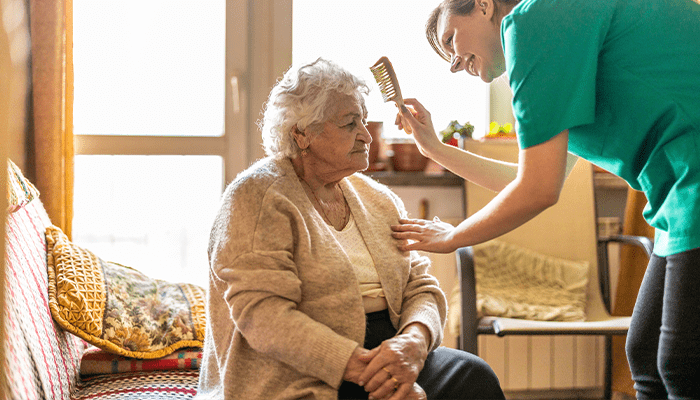
Reducing Fall Risk for New Admissions
According to the CDC, 3,000,000 older people are treated in emergency departments each year for fall-related injuries. The consequences of falling can range from minor bumps and bruises to major trauma, including fractures (especially of the hip), and brain injuries. Severe injuries from a fall can be life-threatening; an estimated 27,000 older individuals die every year as a direct consequence of or from complications following a fall.
Residents are often admitted to senior living care settings as the result of a fall that has occurred in their home or their community. However, admission to a senior living environment also presents its own unique risk for falls for a variety of reasons.
Residents who are newly-admitted to a senior living community face many challenges, from a new living environment to new and unknown caregivers. Residents often experience new or increased confusion associated with an acute health condition which may be impacted as they acclimate to a new living environment.
Based on the unique risk factors of the resident, ensuring appropriate proactive measures is a critical first step to prevent adverse events with injury:
- Screening
- Pre-admission screening should be conducted to determine what interventions are currently being used and what interventions will be necessary at the time of admission.
- Fall Risk Assessment completed on admission/readmission to identify existing risk factors and to guide the implementation of appropriate safety interventions. Ongoing Fall Risk Assessment screening should also be conducted post-fall, quarterly and/or with a significant change in condition.
- Speak with the family members to identify prior fall history and what interventions have been effective while living in the community. A history of prior falls is a strong indicator of future fall risk. Areas of focus should address the following:
- Cognitive impairment that may contribute to falls due to the inability of the resident to understand their physical limitations and/or inability to safely transfer and ambulate.
- Behavioral concerns, such as impulsive behaviors which may contribute to falls.
- Previous toileting routine and ability to self-perform, including ability to locate the restroom.
- Safety interventions to promote resident safety.
- Assessment & Monitoring
- Review of each new admission by the IDT for the first three days post-admission to review how the resident is acclimating to the new environment of care and to determine if safety interventions are appropriate.
- Increased frequency of rounding every hour for the first 72-hours after admission or readmission to the facility.
- Fall Committee review of each admission/readmission for the first four weeks to monitor how the resident is adapting throughout their stay and determine if changes to the treatment plan are necessary.
- Bowel and bladder tracking and evaluation to identify resident ability and routines that may be amendable to ongoing nursing intervention.
- Anticipatory nursing care, such as scheduled toileting assistance until a successful routine is established
- Drug Regimen Review by the pharmacist within the first 24-hours to determine if prescribed medications place the resident at increased risk for fall related incidents.
- Monitor for orthostatic hypotension throughout the first three days of admission for residents receiving antihypertensive, cardiovascular, diuretic and/or psychoactive medications.
- Evaluation of clothing and footwear to ensure proper fit. Attention to the length of pant legs is necessary to ensure that it does not present a fall/slip risk. If concerns are identified remove the item to prevent use and notify the family or legal representative to request appropriately sized clothing or footwear.
- PT and OT screening / evaluation to assist in identification of equipment or transfer/ambulation related concerns.
Resident-focused care, front line staff and family involvement, and ongoing assessment practices contribute significantly to the success of any fall prevention program. Implementing these components as soon as the resident is admitted to your community will help reduce the risk of falls suffered by your new residents. For additional information regarding fall prevention programs and strategies, contact your AssuredPartners Senior Living insurance professional.
Featured News & Insights
Join Us for a Live Webinar Event Thursday, December 18, 2025 | 3:00 - 4:00 PM EDT Details This session will explore the causes and clinical presentation of agitation in residents with dementia,...

The next five years will be critical for senior living and nursing home providers. Shifts in health system consolidation, CMS programs, and hospital partnerships are already reshaping how skilled...

Watch the Webinar Replay In this webinar, we’ll explore the structural changes that are adversely impacting nursing home skilled care revenues. This session will briefly touch on the impact of ACO...
